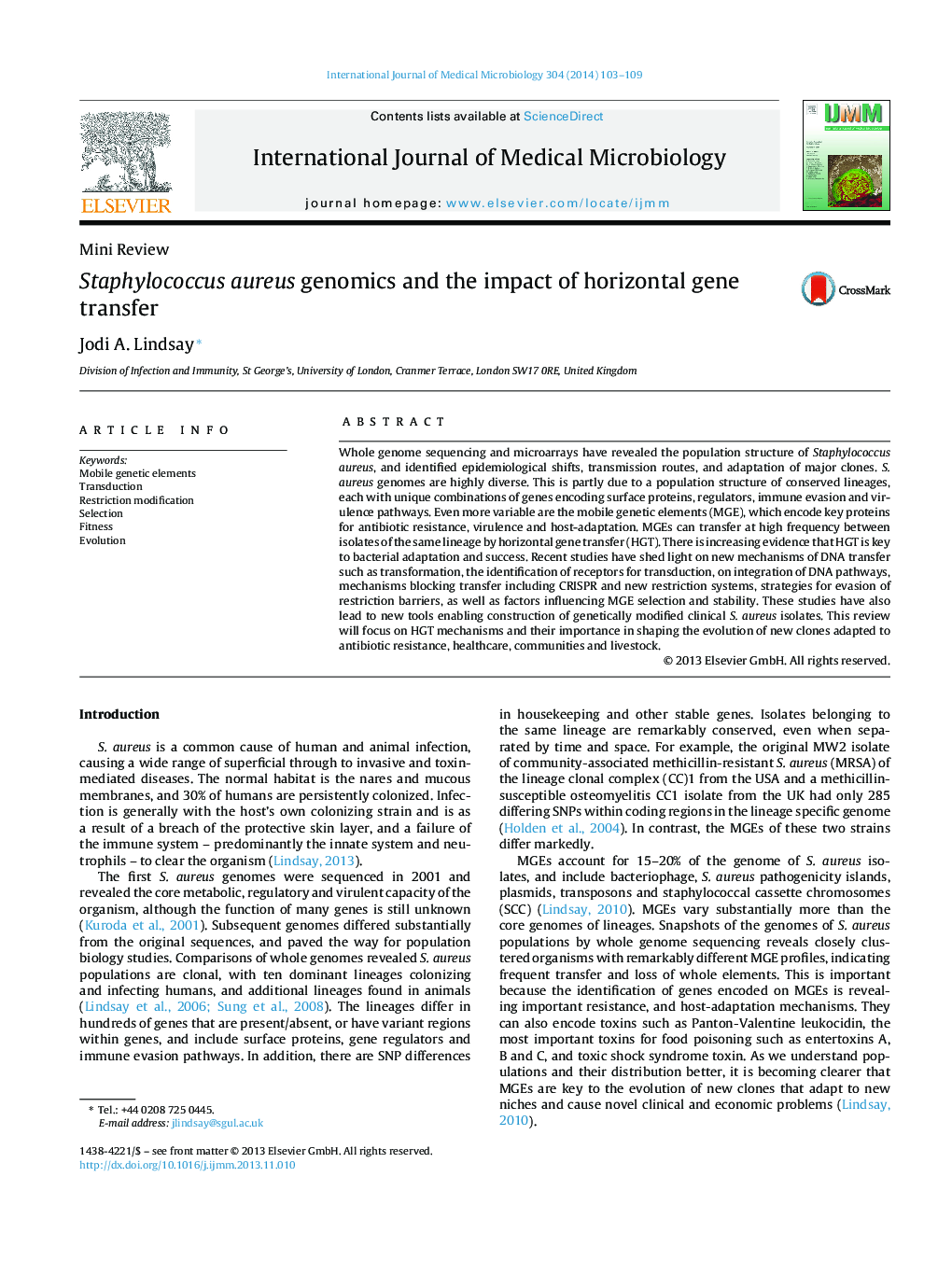| کد مقاله | کد نشریه | سال انتشار | مقاله انگلیسی | نسخه تمام متن |
|---|---|---|---|---|
| 2054815 | 1543696 | 2014 | 7 صفحه PDF | دانلود رایگان |
Whole genome sequencing and microarrays have revealed the population structure of Staphylococcus aureus, and identified epidemiological shifts, transmission routes, and adaptation of major clones. S. aureus genomes are highly diverse. This is partly due to a population structure of conserved lineages, each with unique combinations of genes encoding surface proteins, regulators, immune evasion and virulence pathways. Even more variable are the mobile genetic elements (MGE), which encode key proteins for antibiotic resistance, virulence and host-adaptation. MGEs can transfer at high frequency between isolates of the same lineage by horizontal gene transfer (HGT). There is increasing evidence that HGT is key to bacterial adaptation and success. Recent studies have shed light on new mechanisms of DNA transfer such as transformation, the identification of receptors for transduction, on integration of DNA pathways, mechanisms blocking transfer including CRISPR and new restriction systems, strategies for evasion of restriction barriers, as well as factors influencing MGE selection and stability. These studies have also lead to new tools enabling construction of genetically modified clinical S. aureus isolates. This review will focus on HGT mechanisms and their importance in shaping the evolution of new clones adapted to antibiotic resistance, healthcare, communities and livestock.
Journal: International Journal of Medical Microbiology - Volume 304, Issue 2, March 2014, Pages 103–109
